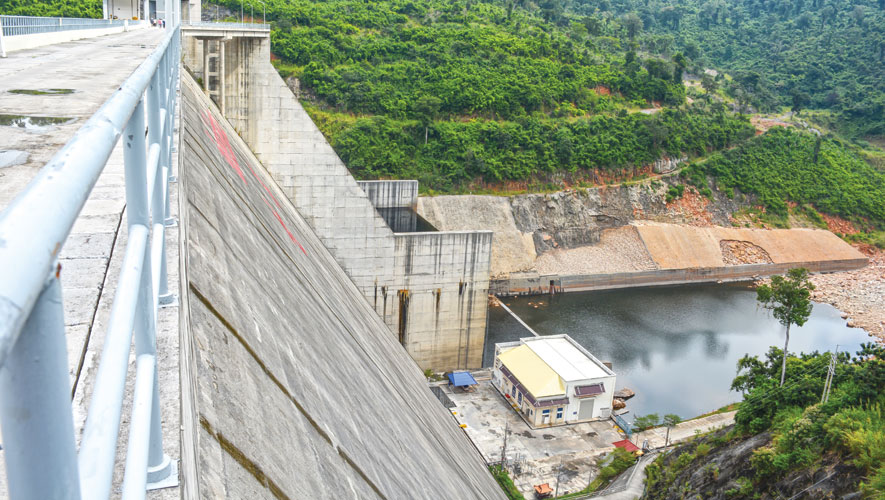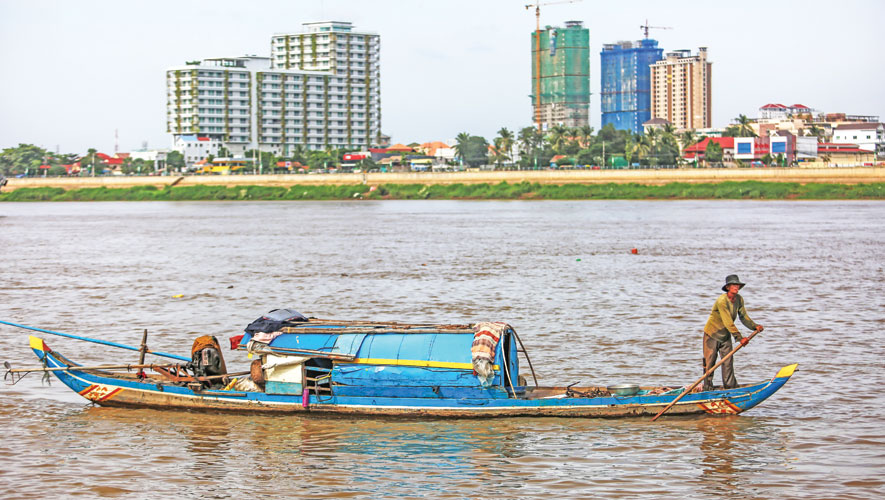Conservation International is again highlighting the importance of the Mekong River, which produces 4.5 million tonnes of fish every year, contributing to more than 80 percent of the protein consumed in the region’s households.
For the latest Cambodian Business news, visit Khmer Times Business
In Cambodia, the Mekong River Commission says that fisheries account for 18 percent of the country’s gross domestic product (GDP) and contribute more to the country’s economy than rice production.
Furthermore, both the Tonle Sap Lake and Tonle Sap River are considered to be the world’s most productive inland fisheries, accounting for 75 percent of Cambodia’s annual inland fish catch and 60 percent of the entire country’s protein intake.
However the country’s fishery sector has been facing challenges that could give rise to more pressing matters in coming years if left without solutions to overcome them. The usage of illegal fishing gear along with poor management practices has contributed to the destruction of natural fish nurseries which has in return led to decreased average fish size and diversity.
This dilemma continues to threaten the livelihoods of those depending on the sector as well as affecting the nutritional needs of millions in the Kingdom.
Rampant overfishing
Fishing being the principle livelihood of many by the lakes in Cambodia but too much of it is being conducted and in a way that is illegal.
According to the World Wildlife Federation, experts estimate illegal, unreported and unregulated fishing nets up to $36.4 billion each year.
Amid a crackdown on illegal fishing along Tonle Sap Lake in August this year, Kampong Chhnang provincial fisheries administration officials seized up to 1,580 metres of fishing nets, 900 wooden poles, 47 fish traps and 100 kilogrammes of fish.
The Ministry of Agriculture reported that Siem Reap provincial authorities had also cracked down on illegal fishing activities along the lake at Puok district. This saw the seizing of 3,200 metres of fishing nets, 1,520 wooden poles and 55 kilogrammes of fish from 25 areas.
The Tonle Sap lake has also been identified as one of the common locations for illegal fishing to take place often during the season when fishing is banned in certain areas in order to allow fish to spawn.
While illegal fishing activities have decreased in comparison with the same period last year because of cooperation with other relevant authorities, it still remains a pressing matter.
The Kingdom’s Fishery Law allows large-scale fishing in waters more than 20 metres deep, while waters less than 20 metres are reserved for local fishing communities.
The illegal catches move through supply chains and there is a lack of systems to track fish from suppliers to consumers.
Provinces such as Koh Kong, Preah Sihanouk, Kampot and Kep are considered to be rich in fishery resources that makes them a target of illegal fishing activities as well.
Illegal fishing activities has also led to a ban being imposed on fish imports from Cambodia to the European Union (EU) after foreign fishing vessels bearing the Cambodian flag were caught fishing illegally in international waters.
The ban had led to fishermen located in the Ung Village unable to export their products to Europe. According to a news report in the Khmer Times, a fisherman in the village said Vietnamese fishermen are often seen entering Cambodian waters and more than 70 percent of fishermen in the community had lodged complains about the violation.
The Ministry of Agriculture Forestry and Fisheries (MAFF) reported investigating 1,653 cases of illegal fishing in the first half of 2017, up 27 percent compared with the same period in 2016. Just 100 of the cases involved sea fishing, while 1,553 were in rivers. More tan 704,430 metres of illegal fishing nets and 274 banned tools were destroyed and about $40,000 in fines were issued.
The Fisheries Administration said the authorities have cracked down on 1,928 fishery crimes across the Kingdom so far this year. Chea San, director-general of the administration stated that his officers had also destroyed more than 750,000 metres of fishing nets.

Livelihoods affected
One of the seafood categories affected was crabs. With overfishing resulting in the decline in crab numbers every year, this has affected the economic livelihood of fishermen. Prices of crabs have significantly increased because of the influx of Chinese nationals into the province who relish them.
However with the gradual decrease in supply as market demand increased, businesses have increased their buying prices in order to attract more fishermen to supply them with crabs.
One family in the business of selling crabs buys them in three different categories, $11 for a large crab, $6 for a medium-sized crabs and $4 for crabs for smaller ones.
Effect of hydropower dams
Cambodian fisheries are also at a risk because of the development of hydropower plants. Dam constructions have been observed to affect the migratory fish habitats by blocking or delaying upstream fish migration and this contributes to the decline and even the extinction of species
Key findings from the Mekong River Commission have shown that further hydropower dam developments – two more in Laos have recently been given approval – will continue to have an economic effect on Cambodia with dire outlooks for its fisheries sector. Today, the Lower Mekong Basin is a key site for large-scale hydropower dam development, and it is estimated that it has the potential to generate 30,000 megawatts (MW) of electricity for the region.
Regional governments are considering the construction of 88 more dams in the Lower Mekong River basin by the year 2030.
More than 120 dams are planned for the tributaries and 11 large-scale hydropower dams are slated for the Lower Mekong mainstream, which has the potential to produce in excess of 13,000 MW of hydropower.
While Thailand and Vietnam have already developed most of their tributary sites, Cambodia, Laos and Myanmar currently possess the greatest potential for hydropower resource development and, by the year 2030, they’re expected to reach a combined percentage of hydroelectric generation of 96 percent.
In 2017, it was reported that the annual fishery GDP losses for the Kingdom are expected to be on a scale of $3 billion to $5 billion under the Council Study’s development scenarios for 2020 and 2040.
The MAFF had also projected a drop of 16 to 30 percent in fish biomass.




